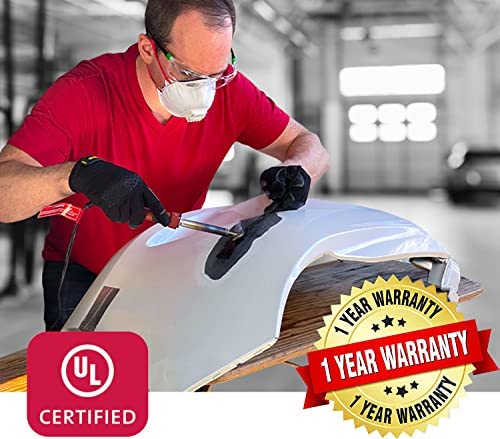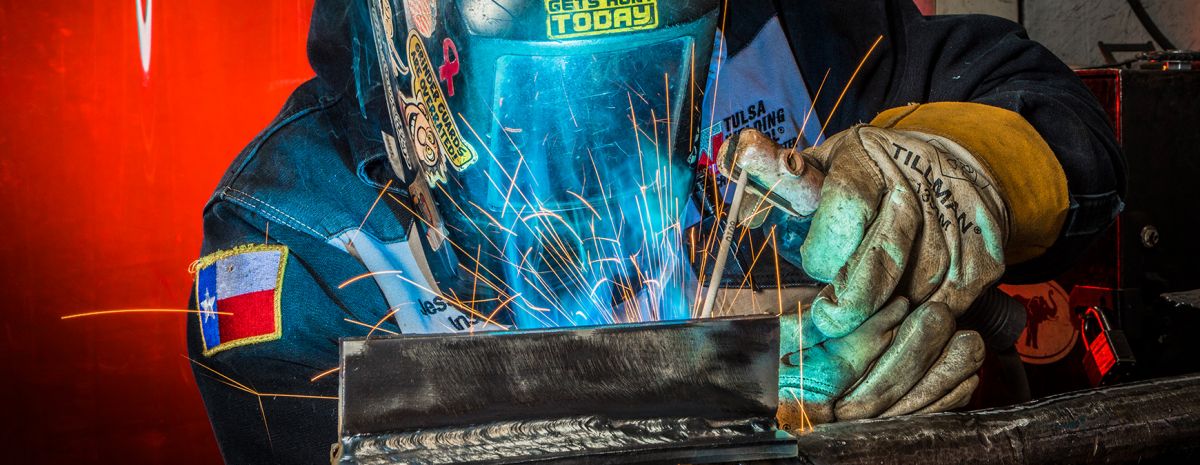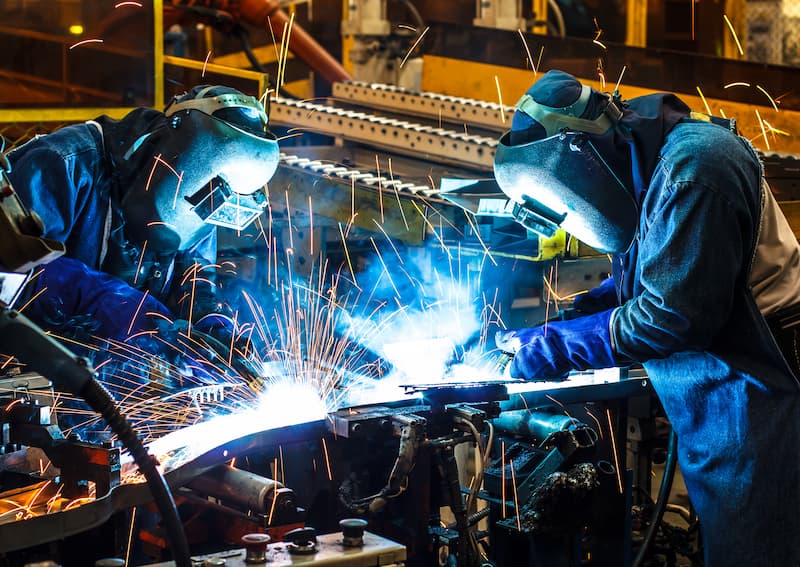Usual Welding Repair Service Issues and How to Address Them Successfully
Welding fixings commonly come across a series of issues that can endanger the honesty of the end product. Common problems consist of insufficient penetration, porosity, and imbalance, among others. Each issue provides distinct challenges that call for details strategies for resolution. Comprehending these concerns is necessary for welders intending to improve their results and abilities. This conversation will certainly explore these usual welding repair issues and efficient approaches to resolve them.
Poor Infiltration
Inadequate penetration takes place when the weld steel falls short to completely fuse with the base product, leading to weak joints and potential architectural failures. This problem often originates from inadequate warm input, inaccurate electrode angle, or inappropriate welding rate. Welders might experience poor penetration as a result of a mistake of the essential parameters for a details product thickness or type. Additionally, contamination on the base material's surface can hinder effective bonding, worsening the trouble. To attend to inadequate infiltration, welders must assure suitable setups on their equipment and preserve a clean job surface. Routine evaluation of welds is suggested to recognize any type of deficiencies early, enabling timely adjustments and the prevention of compromised structural stability in welded settings up.
Porosity
Porosity is a common problem in welded joints that manifests as little gas bubbles entraped within the weld steel. This issue can endanger the stability of the weld, bring about reduced toughness and potential failure under stress and anxiety. Montana Mobile Welding and Repair Belgrade. Porosity normally develops from contamination, moisture, or inappropriate welding methods, which allow gases to get away right into the liquified weld pool. To deal with porosity, welders need to ensure appropriate surface area prep work, maintain a tidy functioning atmosphere, and utilize appropriate welding specifications. Additionally, selecting the right filler material and protecting gas can mitigate gas entrapment. Normal examination and screening of welds can help identify porosity early, guaranteeing timely restorative actions are taken, consequently preserving the quality and integrity of the welded structure
Misalignment
Misalignment in welding can develop from various variables, including incorrect arrangement and thermal expansion. Understanding the source is essential for reliable resolution. A number of modification techniques are readily available to straighten components and ensure structural honesty.
Sources of Imbalance
Welding imbalance often stems from a selection of underlying problems that can endanger structural integrity. One main cause is inappropriate fit-up of parts prior to welding, which can bring about voids and unequal surfaces. Variants in thermal expansion during the welding process can additionally cause distortion, particularly if the products being joined have various coefficients of growth. In addition, inadequate fixturing and securing might stop working to hold components firmly in place, resulting in activity throughout welding. Poorly conserved tools, including welding machines and devices, may present incongruities in the weld grain, more adding to imbalance. Operator mistake, stemming from not enough training or experience, can likewise play a significant function in producing misaligned welds.

Correction Strategies Readily Available
Attending to misalignment effectively calls for a mix of restorative methods tailored to the particular issues handy. One common approach is using jigs or components to hold components in the appropriate setting during welding, making certain regular alignment. In addition, pre-heating the materials can aid reduce distortion and improve fit-up. For considerable imbalance, mechanical realignment methods, such as making use of hydraulic jacks or clamps, can be used to correct the setting before welding. Post-weld warm therapy might likewise be required to soothe stress and anxieties triggered by imbalance. Finally, cautious inspection and modification throughout the setup stage can avoid imbalance issues from coming to be considerable problems, promoting a smoother welding procedure and improving overall architectural honesty.
Distortion
Distortion is a common challenge in welding that can develop from different aspects, including irregular heating and cooling. Comprehending the reasons for distortion is essential for carrying out reliable prevention methods. Addressing this issue not only improves architectural stability yet likewise enhances the overall top quality of the weld.
Causes of Distortion
When subjected to the intense warmth of welding, products commonly undertake adjustments that can lead to distortion. This sensation largely arises from thermal expansion and tightening during the welding process. As the weld area warms up, the material broadens; upon cooling, it contracts, which can produce internal stress and anxieties. Furthermore, unequal heating throughout a work surface can aggravate these stress and anxieties, leading to warping or bending. The kind of product likewise plays a considerable role; steels with varying thermal conductivity and coefficients of expansion may respond in different ways, bring about unpredictable distortions. Additionally, poor joint layout and inadequate fixturing can contribute to imbalance throughout welding, boosting the possibility of distortion. Understanding these reasons is necessary for efficient welding repair and prevention methods.
Prevention Techniques
Efficient avoidance techniques for distortion during welding concentrate on managing heat input and ensuring correct joint layout. Maintaining a regular warm input aids to decrease thermal expansion and contraction, which can result in distortion. Using strategies such as pre-heating the workpiece can likewise reduce the temperature level slope, promoting uniform heating. Additionally, picking proper joint styles, such as T-joints or lap joints, can boost security and lower tension focus. Implementing correct fixturing to safeguard the work surfaces in place better aids in preserving positioning during the welding process. Staggered welding sequences can distribute warm a lot more uniformly, protecting against local distortion. By using these strategies, welders can significantly reduce the chance of distortion and enhance the total quality of their welds.
Splitting
Cracking is a common concern encountered in welding fixings, commonly resulting from numerous elements such as inappropriate air conditioning prices, material selection, or inadequate joint preparation. The occurrence of cracks can greatly endanger the integrity of the weld, bring about prospective failings throughout procedure. To address this concern, welders need to Full Report initially evaluate the source, making sure that products are suitable and properly selected for the details application. Furthermore, regulating the air conditioning price during the welding process is vital; fast cooling can induce anxiety and bring about breaking. Correct joint design and preparation also contribute to lessening the danger. Implementing these approaches can boost weld top quality and durability, eventually minimizing the probability of splitting in finished weldments.

Insufficient Combination
A significant problem in welding repairs is insufficient blend, which occurs when the weld steel does not sufficiently bond with the base product or previous weld passes - Montana Mobile Welding and Repair Belgrade Fabrication. This flaw can bring about weak points in the joint, potentially endangering the integrity of the welded framework. Variables adding to insufficient fusion include inadequate warm input, improper welding method, and contamination of the surface areas being signed up with. To address this concern properly, welders ought to guarantee proper pre-weld cleaning and surface prep work, along with readjust their welding specifications to achieve adequate infiltration and combination. Regular inspection during the welding process can additionally help recognize insufficient combination early, enabling prompt rehabilitative steps to enhance the total top quality of the weld
Overheating
While welding repairs can improve architectural honesty, overheating offers a significant obstacle that can bring about product degradation. Extreme heat throughout welding can modify the mechanical buildings of metals, leading to decreased strength, enhanced brittleness, and warping. This sensation is particularly essential in high-stress applications where architectural dependability is extremely important. Determining overheating can include visual inspections for discoloration or distortion, in addition to keeping track of temperature throughout the welding process. To alleviate the threats related to getting too hot, welders need to use ideal strategies, such as controlling warm input, changing traveling speed, and using ideal filler materials. In addition, executing pre- and post-weld warm therapies can aid recover material residential or commercial properties and improve the total top quality of the repair, ensuring long-lasting performance and safety.
Frequently Asked Inquiries
What Are the Typical Signs of a Welding Flaw?

Exactly How Can I Test My Welds for Quality?
To test welds for top quality, one can utilize visual evaluations, ultrasonic testing, and radiographic approaches. Each method guarantees architectural honesty, recognizes problems, and validates adherence to defined requirements, ultimately enhancing the reliability of the bonded joints.
What Security Preventative Measures Should I Take While Welding?
When welding, one should focus on security by using suitable personal safety devices, ensuring correct ventilation, safeguarding flammable products away, preserving a clean work space, and understanding surroundings to avoid injuries and crashes.
Can I Fix a Weld Without Renovating the Entire Joint?
Fixing a weld without renovating the entire joint is feasible, depending on the damage (Montana Mobile Welding and Repair Welding). Techniques such as grinding, adding filler product, or using have a peek at this site a welding procedure can properly address certain defects while preserving the surrounding structure
What Devices Are Vital for Reliable Welding Fixes?
Crucial devices for efficient welding repair services consist of a welding machine, wire brush, mill, protective gear, clamps, and filler products. Each tool plays a crucial function in making sure high quality and safety during the repair procedure. Porosity generally develops from contamination, dampness, or inappropriate welding methods, which allow gases to escape into the liquified weld pool. Improperly conserved equipment, consisting of welding makers and devices, may present incongruities in the weld grain, additional adding to misalignment. When subjected to the extreme warm of welding, materials typically go through changes that can lead to distortion. Splitting is a common issue experienced in welding repair services, typically resulting from various variables such as incorrect air conditioning prices, product choice, or insufficient joint preparation. A significant problem in welding repair services is incomplete fusion, which happens when the weld steel does not appropriately bond with the base product or previous weld passes.